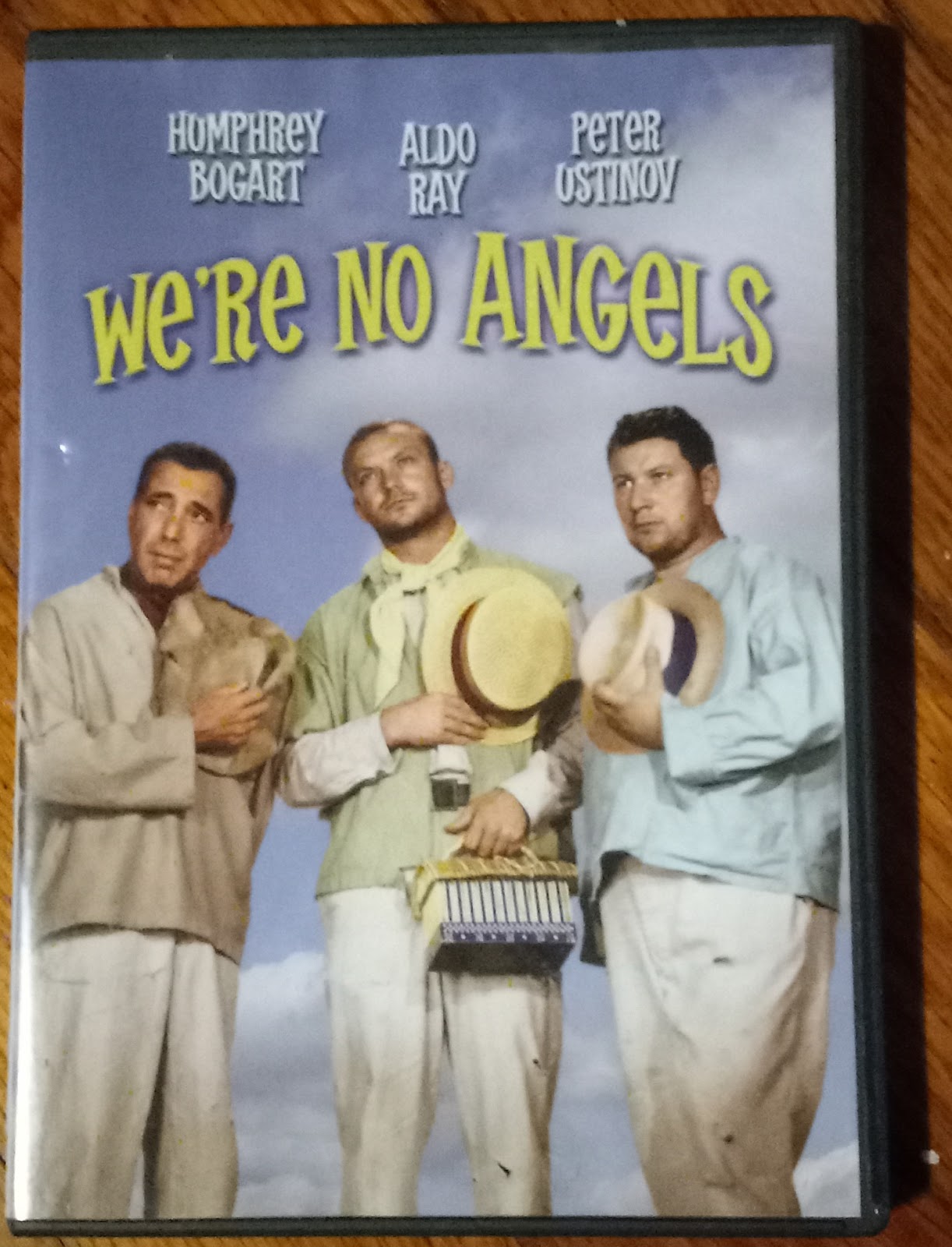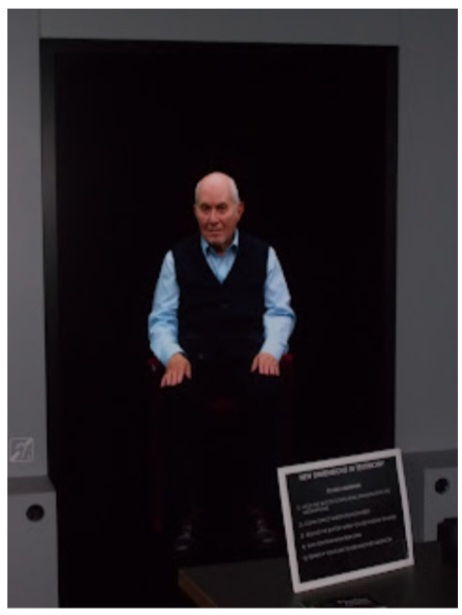History is rarely a strict chronicle of events, often it is a story woven into many other stories. This blog is the thoughts about History and Museum work, from a young historian.
Sunday, December 31, 2023
A New Year Resolution: The Bible in a Year
Sunday, December 17, 2023
Double Feature: Have Yourself a Dark Little Christmas
I watched two of my favorite Christmas movies this year and I realized they are both a little darker than your typical classic Christmas movie. These two dark comedies are as charming as Miracle on 34th Street or Its Wonderful Life but deal with more the macabre themes. From conmen and mobsters to murderers and crooks here is a double feature to give yourself a dark little Christmas.
Lemon Drop Kid (1951)
Bob Hope stars as the titular “Lemon Drop Kid” a conman who touts horses. He touts the wrong horse to the mob boss Moose Moran’s girlfriend. Now the Kid has to pay back the money by Christmas Day or he's "going to find his head in his stocking." To keep from being killed for Christmas he cons “old dolls” into staying at his “Old Folks Home” so he can raise the money through donations. Then run off with all that that money. The film contains three musical numbers including Bob Hope’s rendition of Silver Bells. The question is can a musical be a "dark comedy?" Watch the film, it is Bob Hope so how dark can it be?
We're No Angels (1955)
One of my favorite films of all time. Humphrey Bogart, Peter Ustinov, and Aldo Ray are three escaped convicts from the infamous prison Devil’s Island.
The film is light hearted in a lot of ways, while also dealing with the idea who should be in prison who shouldn't be. The three convicts boast of their exploits, Bogart’s character is said to be "the Michelangelo” of forgery. He goes on to boast that his only regret is "getting caught." While his two colleagues joke of the murders they committed. Joan Bennett's character Madame Ducotel says she envies the convicts of their "courage" and even imagines ways to kill her cousin. She says "that's as far as it would ever go just a thought in the back of her mind." Then there is Paul and Cousin Andre played by John Baer and Basil Rathbone respectively. Cousin Andre descends on the scene bullying relatives and convicts alike. His nephew Paul’s greed shows through as he burns his uncle’s will and claims his entire fortune. The whole cast of characters show different degrees of humanity’s faults. As Bogart’s character observes, “I think everyone on this island is innocent except me.”
A slight Historical/geographical note, the story takes place in the colony French Guiana on the north eastern coast of South America. In the movie it is implied, if not actually stated, that the convicts are trying to get off an island while hiding out in Cayenne the capital of French Guiana. There are three islands off the coast of French Guiana, Devil’s Island, of course, Royale Island and St. Joseph’s Island and all have prison facilities on them. Cayenne is on the mainland which also includes prison facilities. It is a slight historical inaccuracy that they are trying to get off of Devil’s Island since the actual Devils Island is only roughly a mile across with no cities but this is understandable since the entire prison complex is known as “Devil’s Island.” The last prisoners left Devils Island in 1953, two years before the film was released.
To be fair, these are probably more "grey" than "black" on the dark comedy scale both deal with criminal characters that do “the right thing” in the end. They are two holiday classics that are fun and should get more love than they do.
Kanter, Stefan. Tough Without a Gun: The Life and Extraordinary Afterlife.New York: Alfred A. Knopf, 2011.
"Britanica." accessed 12-17-2023. https://www.britannica.com/place/Iles-du-Salut.
Sunday, November 5, 2023
History is...Or Something Like That
My first college history course the professor asked the class what is history? I in my freshman wisdom answered that it was a story! The professor wasn’t that impressed with that answer. Another student put forward the text book answer that “History was the study of the past.” The professor took a few more answers before settling into his lecture about the “conversation with the past.” Fast forward about 13 years, I have changed my answer History is more than a story, but I would also narrow the text book answer. We could define history as the study of the past but when we talk about the age of the earth we generally talk in terms of Geology, Theology or Philosophy. History is the study of the human past. When we refer to history we are mostly talking about people. That is why history seems to repeat itself because people tend to make similar choices. Human nature seems to not change much.
From this first history class I have become obsessed with peoples definition of history. The joke goes ask 100 historians what is history and you’ll get 112 answers. It’s true, do a google search for what is history quotes. I’m not sure why that is, I suspect it is because history has to do more with philosophy than many historians would care to admit. That discussion is for a future post.
This post is really just to state that I believe History is the study of the human past. This is of course assumed with the text book definition but stating that history is about human lives reminds us that the past was as complicated as the present.
Thursday, October 12, 2023
A Limited Book Review: Killing the Rising Sun or Road to Surrender
Sunday, October 1, 2023
Double Feature: Film Foliage or The 2 Best Films to Watch For Fall
Sunday, September 3, 2023
History in The Future
Earlier in the summer I answered a question posed on a Facebook group called History Majors[i] about history and AI in the future. I was quite proud of my answer, this is a revised and extended version of that answer. I posted a link to the FB group page if you would like to see the original post.
A few years ago I visited the Holocaust Museum in DC.[ii] One of the exhibits was a beta program where they had interviewed survivors for hours and hours and uploaded into a computer interface. This was Dimensions In Testimony[iii] a program sponsored by USC: SHOAH Foundation. There was a holographic image of the person and when you asked questions to the image, the computer matched your question to a story that the interviewee told during their interview.
I would imagine that future iterations of AI will be able to extrapolate a life like image of historical figures using busts, portraits, and photographs to render a life like image. This may even be done today with more modern figures like Harry S. Truman or John F. Kennedy who were photographed and filmed for extended periods of time. This image would be able to move and talk to guests as hologram figures. AI would be able to gather primary sources such as letters and diaries and then be able to answer questions as that historical figure might. Thus far AI technology has not been able to speak, that may change in time.
The example that I see in my mind is George Washington walking into the Mount Vernon welcome center and greet guests to his home.
AI has gotten a lot of press lately (mostly negative) since Hollywood has screeched to a halt with the Writers Guild and SAG-AFTRA strikes. There are some legalities to work through and technological advances to work out. AI would be an interesting addition for museums and historical sites to use in their tours. My hope is that museums seriously look at new technologies to present historical research to the public.
Sunday, August 27, 2023
A Limited Book Review: Killing the Rising Sun
That being said I did have several issues with this book. I wasnt going to gripe about facts since im not very knowledgeable about WW2 history. However, I do have one gripe about the facts in the book. On page 242 the author says "A thousand Soviet Tiger tanks and Sherman tanks "on loan" from the Americans face absolutely no armor on the Japanese side." To my knowledge the Soviets didn't have a tank called Tiger and did not operate captured German Tigers in large numbers. I don't know if this is a typo, a misquote or simply an awkward sentence. This is a minor point but I do have four, what I call, "Red Flags" popped out at me.
1. I don't trust Nonfiction books that actually say this is the "true story." As a nonfiction it should be implied that what the author is saying is at least the authors interpretation of true facts and events. The fact that the author has to explicitly say this is true makes me suspicious. "What Martin Dugard and I are about to tell you is true and stark." pg2.
2. The second red flag is when I constantly say to myself how does he know that? Not that I doubt the history presented but when the author says "Sachs chooses his reply carefully (pg 3)." Or "The morning heat is so unbearable that Corporal Lewis Kenneth Bausell, USMC, has trouble breathing (pg7)." How do we know that was what he was thinking or feeling? Was there a photograph, a film was this person interviewed? If so let me know how we know, otherwise I'm concerned that the author is so focused on building the drama of the scene that they drift from historical fact. If you don't know say so or leave it out.
3.This book doesn't have a bibliography. A bibliography is not necessary as long as you site the sources used in your book. Killing the Rising Sun does have a source page. My gripe may just be a personal preference. I believe Histories should have bibliographies or at least extensive chapter notes to give the reader a chance to evaluate where is the author getting his information and how old is his information.
4. My final issue is the way history is used. I don't doubt the facts of atrocities committed by the Japanese army at Nanking or that PFC Desmond Doss, Medal of Honor recipient, was a hero, but when these two stories are juxtaposed with each other to illustrate evil of one versus the virtue of the other, I have to question the motives.
Like I said I dont doubt the facts but the usage of the narrative makes me doubt the truthfulness of the narrative.
I did enjoy reading this book, it reminded me of my favorite questions about history. "What is history? and Why do people study it?" However if someone asked me for a book recommendation about the Pacific war, it would not be this one.












